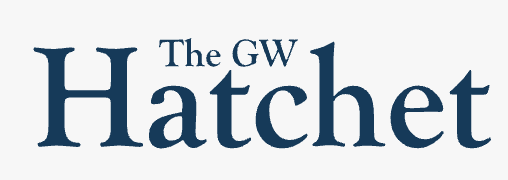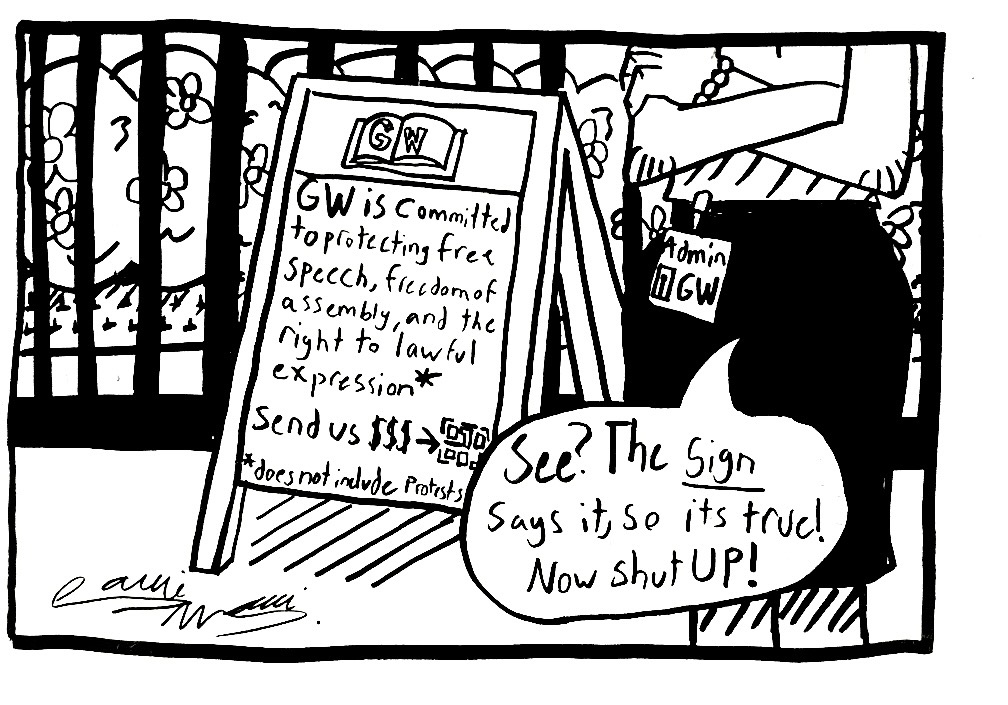President Donald Trump’s executive orders have put higher education in the crossfire.
Earlier this month, Trump’s administration announced it would cap indirect funding from the National Institutes of Health at 15 percent, which usually aids universities in covering research costs related to laboratories and equipment. This sparked outcries across higher education institutions in fear that funding of health and medical research would severely decline. Earlier this month, GW joined a lawsuit alongside other research universities across the country to fiercely push against the proposed cuts, saying the move was unlawful and would harm medical research.
The University’s effort to protect research funding is a pragmatic step toward protecting its community from the fallout of the Trump administration. But the presidency has barely begun. GW must continue these efforts, whether it’s through litigation or guiding the community through the changing political landscape as we settle into the next four years.
The NIH cuts are just the latest in the saga of federal funding cuts implemented by the Trump administration, in an effort to cut indirect funding to use taxpayer money “better.” These costs keep research institutions like GW alive, covering essential tools, like equipment, maintenance and staff. In fiscal year 2024, 82 percent of research funding at GW came from federal sources, totaling around $150 million.
Countless students, faculty members and researchers would be seriously hit by these cuts: GW research has explored the effects of the COVID-19 vaccine uptake and tobacco use, linking cardiac tools to heart failure and researching the effectiveness of ultrasound application on the pancreas, with these projects potentially directly hinged on federal funding. We applaud the University’s move to join the lawsuit.
But we can’t ignore the fact that GW’s interests are tied directly to the lawsuit, especially after joining the ranks of the prestigious Association of American Universities and relying on its research prestige to attract prospective students. The battle to preserve higher education is just beginning, and GW must go further than offering support only when its interests as an institution are threatened.
It’s clear what Trump’s plans for education are: aimed at defunding education and exerting influence on what’s being taught in schools. GW must commit to responding to future actions just as forcefully as they did with the NIH cuts publicly — or privately — reassuring students and professors that they’ll be supported by the University once a policy or executive order is enacted.
GW has already taken strides toward this goal in recent weeks. Officials launched a website earlier this month tracking federal actions and how they may affect the community, informing others of what to do if Immigration Customs Enforcement comes to campus and notifying students of their individual rights. These small steps in bracing for Trump’s actions are vital in preserving the security of our community. As the editorial board argued recently, we must filter out the chaos of the current administration and zero in on the concrete actions in our power to combat these harmful policies.
The University should also brace for shake-ups in other realms of the District. Following Trump’s self-promotion as the chairman of the Kennedy Center, prompting sweeping exits and firings of artists and board members, GW could open campus spaces like Lisner Auditorium to performers to throw a life vest to the local cultural landmark. In the wake of Robert F. Kennedy Jr.’s appointment as Health and Human Services secretary and his history of vaccine skepticism, GW should broaden its vaccine clinics to once again include the COVID-19 shot and increase advertising for its offerings. And for a swath of politically minded graduates looking to enter the federal workforce this spring, the University could ease their transition amid the current federal hiring freeze by harnessing the ample alumni network and bolstering career events, as GW Law already has.
The University can’t exactly shield its students from the impacts of the Trump administration. We all must eventually leave the comfort of the Foggy Bottom bubble, for better or for worse. But GW should continue its dialogue with students about the impacts of the current administration’s actions and guide the community on how to adapt.
Last November, our editorial board commended GW for not adopting institutional neutrality and urged the University to use its voice as an institution to support and stand up for its community. Now that officials have taken a significant step toward doing so, we again applaud the University. But we’ve got 47 more months of this administration, and GW needs to keep taking action accordingly.
The editorial board consists of Hatchet staff members and operates separately from the newsroom. This week’s staff editorial was written by Opinions Editor Andrea Mendoza-Melchor, based on discussions with Contributing Culture Editor Caitlin Kitson, Research Assistant Carly Cavanaugh, Copy Editor Lindsay Larson, Culture Editor Nick Perkins and Sports Columnist Sydney Heise.



